Water Efficient Landscaping
One of Micke Grove
Zoo's (MGZ) goals is to conserve water through water-wise
landscaping. The California Chaparral and Central Oak Woodland
eco-region that the zoo is located in, is shaped by hot, dry
summers and mild, wet winters. This region is characterized by
mixed oak and pine woodlands [Valley Oak (Quercus lobata), Blue Oak
(Quercus douglasi), Coast Live Oak (Quercus agrifolia),
Interior Live Oak (Quercus wislizenii), and Gray Pine (Pinus
sabiniana)] growing fairly close together, mixed in with
plants, shrubs, annual wildflowers, and few grasses. Although
much of the oak woodlands of Central Valley have been lost,
Micke Grove Park has a robust population of oak and pine species
that characterize this eco region. A water-wise landscape in
central California necessarily needs to incorporate native
plants, shrubs and trees that are adapted to the local
environment, have relatively low water requirements and are
drought tolerant, requiring very little water, or no water at
all once they are established. Water efficient landscaping thus
lowers consumption of groundwater and allows surplus water to be
available for other domestic and community uses and the
environment.
Adapting the basic
principles of water wise landscaping, MGZ has begun replacing
high maintenance landscape areas with drought tolerant native
plants, shrubs, trees, wildflowers and climbers. Also by
planting California natives MGZ aims to provide feeding and
breeding stations for threatened butterflies native to
California (such as the Monarch butterfly - Danaus plexippus
spp. plexippus), and several species of bumblebees
(western, Bombus occidentalis; yellow, Bombus fervidus;
American, Bombus pensylvanicus; Morrison, Bombus
morrisoni).
MGZ has used a
number of resources to deliver its water-wise landscaping
program. Information and resources on choosing the right
location-specific plants, planting information, type of
substrate, type of irrigation, and inter-plant distance were readily
available from a number of online sites. These include
California Native Plant Society’s (CNPS)
Calscape website, the
Las Pilitas nursery,
Xerces Society, the
Theodore Payne
Foundation, and Monarch Watch. The California Native Plant
Society’s Calscape tool helped identify native plants suitable
for our location by plant type, water needs, shade tolerance,
and other criteria, and also helped locate local native plant
nurseries. The Las Pilitas nursery website had more hands on
information on buying plants, the planting procedure and ongoing
maintenance. The Xerces Society was instrumental in helping MGZ
plan and establish our Monarch WayStation and pollinator garden.
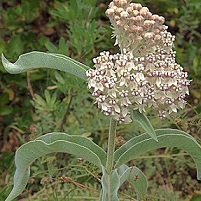 Narrow leaf milkweed |
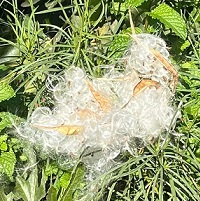 Narrow leaf milkweed Seed pods |
 Photo courtesy: WikiMedia Commons Woollypod milkweed |
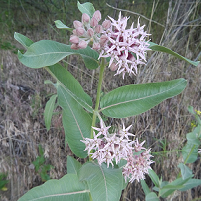 Photo courtesy: WikiMedia Commons Showy milkweed |
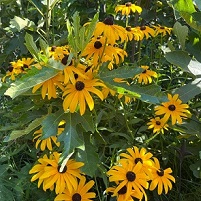 Black-eyed Susan's |
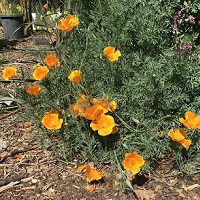 California poppy |
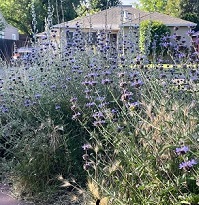 Cleveland sage |
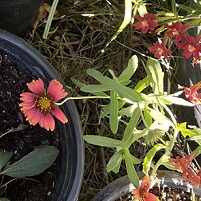 Indian blanket flower |
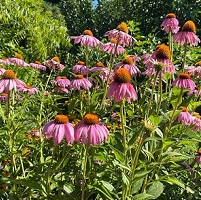 Purple coneflower |
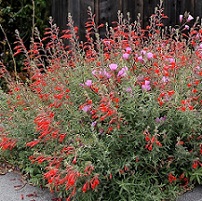 California fuschia |
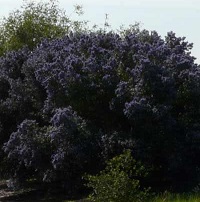 Photo courtesy: Las Pilitas Nursery Ceanothus 'Ray Hartman' |
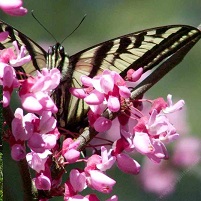 Photo courtesy: Las Pilitas Nursery Western Redbud |
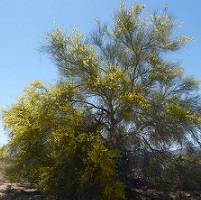 Photo courtesy: Las Pilitas Nursery Palo Verde tree |
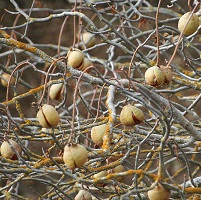 Photo courtesy: WikiMedia Commons California Buckeye |
 Photo courtesy: Las Pilitas Nursery Blue Eldeberry |